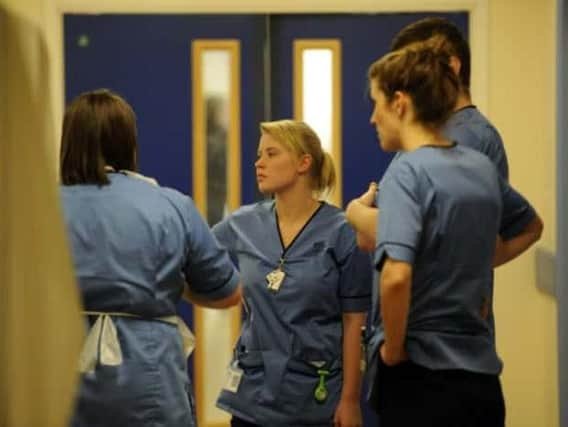BMA Scotland highlight concern over real scale of consultant vacancies


A Freedom of Information (FOI) request by BMA Scotland has revealed the actual vacancy rate is 13.9 percent compared to the already high 6.8 percent figure reported by the Information Services Division (ISD) which is used by the Scottish Government. According to BMA Scotland the difference is the equivalent of around 375 whole time equivalent vacancies that are not being recorded by offcial data. The number of “hidden” consultant vacancies was last night described as “staggering” by Scottish Lib Dems health spokesperson Alex Cole-Hamilton.
The news came on a day when the number of GPs in training sunk to a five-year low and over 2,000 nursing and midwifery posts remain unfilled with the number of vacancies lying empty for three or more months topping the 1,000 mark. The BMA say many boards are no longer trying to actively recruit to over a fifth of the vacant consultant posts which are ‘likely to be hard to fill posts where attempts to recruit have not been successful’.
Advertisement
Hide AdAdvertisement
Hide AdREAD MORE: NHS Scotland is ‘not financially sustainable,’ says watchdogThese unfilled vacancies can be removed temporarily from the overall figure along with posts not yet cleared for advert - which are also excluded.
The doctors’ union also highlight the problem of locums being used to fill posts with nearly 40 percent of vacancies being covered in this way.
They say that filling vacancies with locums is a temporary solution and does not provide long term sustainability.
Another concern in this context is the rising number of posts in the official figures which are vacant for 6 months or more, which is up by 1.7 percent on the same time last year – again demonstrating posts are hard to fill. Four years ago, the BMA conducted similar research, which also reflected concern that vacancy rates were being underestimated and offered to work with the Scottish Government to allow a more complete picture of consultant vacancies to be compiled.
Dr Simon Barker, Chair of BMA Scotland’s Consultant Committee said: "Our members often tell us that the published consultant vacancy figures don’t reflect the reality of the huge challenges of working on the frontline of Scotland’s NHS. The new data from our FOI suggests they are absolutely right to feel that way.
“This analysis shows that by not including certain categories of vacancy, the official statistics simply don’t provide the full picture of the scale of consultant vacancies in our NHS.
“For example, vacant posts that go unfilled are then removed from official figures. Our FOI data suggests that when these are added back in, and few would argue that these aren’t real vacancies, the actual vacancy rate is substantially higher than boards report. Collectively, that means there are potentially around 375 vacancies on top of those counted by official figures - the equivalent of a large hospital empty of its senior doctors.
“We welcome efforts made to increase the consultant workforce in recent years, and of course this is a complex and difficult issue. But we simply won’t make any progress in making sure we have a properly staffed NHS if we continue to work off incomplete figures or rely complacently on increases in the overall headcount. That simply isn’t good enough – for patients or doctors."
Advertisement
Hide AdAdvertisement
Hide AdREAD MORE: BMA Scotland chair quits after frustration with staff shortagesHe added: “That’s because, behind these figures are senior doctors who are pushed into covering the work of these vacant posts.
"These are professionals doing their absolute best, but under these conditions we risk burnout and stretching people beyond their limits. Inevitably this leads to more people leaving the profession early and the high standard of care for patients that we all strive for, not being achieved.
“We need urgent action to encourage people to enter the medical profession and equally importantly, retain those who have dedicated their professional lives to this demanding career. That means a fair and attractive reward package that reverses a decade of real terms decline in pay; and working conditions that support work life balance and ensure workloads are manageable. A key first step to that must be having a full and accurate picture of the data available. Just as we stated four years ago, we remain happy to work with the Scottish Government to deliver exactly that.”
The BMA stated that they are not suggesting the official figures are inaccurate, rather they don't capture the full picture of consultant vacancies across the country and its impact on the service.
Alex Cole-Hamilton said: "The apparent extent of hidden consultant vacancies is staggering. There’s no way the Scottish Government can take effective action to counter shortages if they’re working off wildly wrong numbers.
“Every MSP will have had complaints from consultants in their area about dwindling numbers, just as I have. Ministers have a duty to make sure official vacancy statistics are realistic and representative.”